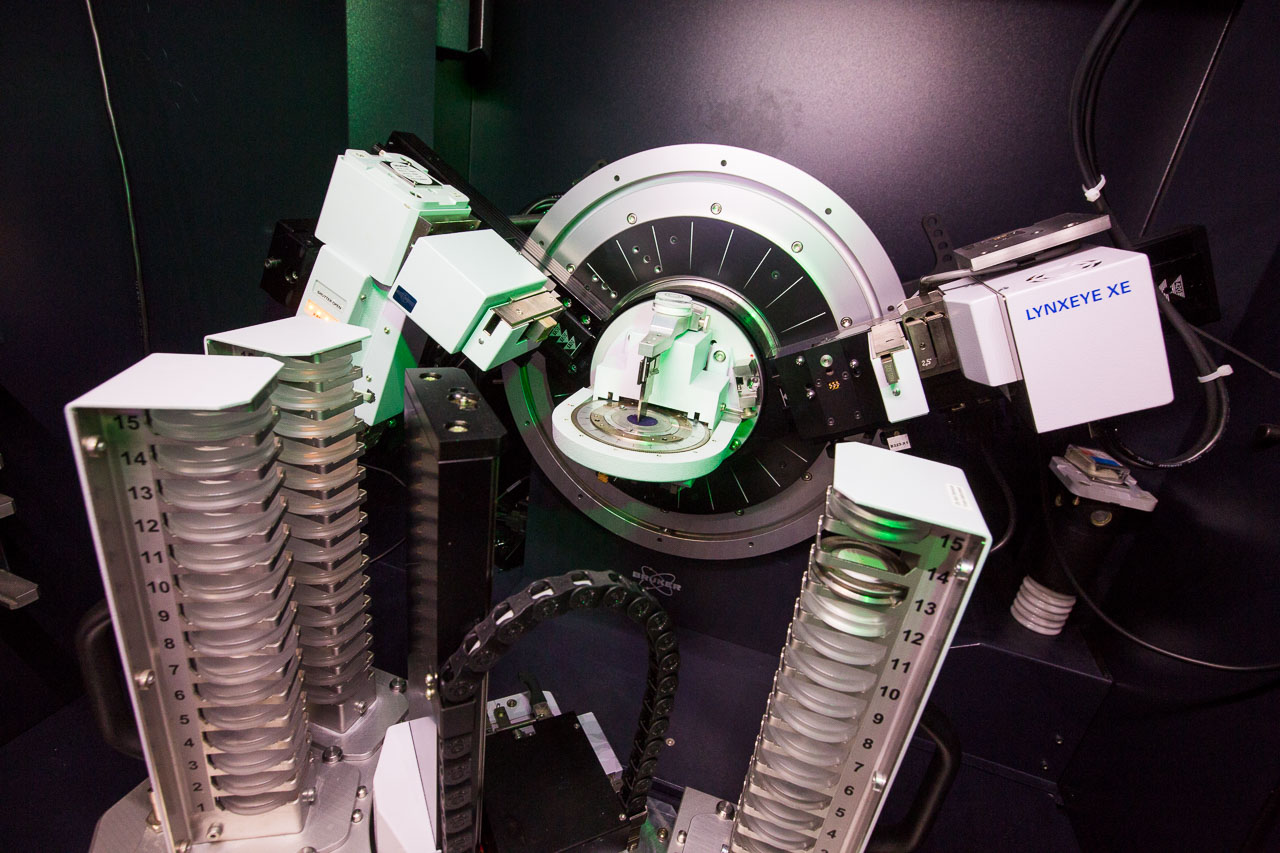X-ray diffraction provides information on the structure of your material.

X-ray diffraction provides information on the structure of your material. The instrument is capable of collecting x-ray diffraction data on a wide range of sample types.
The laboratory can provide a variety of services in ambient conditions including:
- Crystalline phase identification
- Semi-quantitative phase analysis
- Data interpretation, analysis, and report generation
- Consultancy and integration into research programs
Specifications
Instrument: D8 Advance Diffractometer
Manufacturer: Bruker
- Ni-filtered Cu Kα radiation
- Capable of collecting data from ~1° to 160° 2θ
- It is fitted with an automatic sample changer, allowing for easy data collection of up to 30 samples
- Flexible sample mounting of powders and solids including zero background sample holders for measuring very small samples, and front and backloading sample holders for powders or flat solids
Access
The instrument is available for University of Melbourne researchers to use, and is booking on the MCFP's iLab Booking System. It is also available as a fee-for-service for external researchers and industry. Please contact Raveen Wijesuriya to discuss options for training or service data acquisition.
Sample preparation
As a guide, powders should have the consistency of flour – dry, and ground to ~50 um particle size. Ideally, 2 g is required, but this can be as small as 20 mg, depending on the analysis required.
The XRD lab has an agate mortar and pestle along with a micronising mill to reduce the particle size of crystalline samples. Small test sieves (32 - 500 um) are also available to determine particle size.
For solid samples, the maximum size for standard data collection is 39 mm in diameter, 5 mm high. The sample surface must be flat.
Additional resources
Further information on the Bruker D8
See Also
-
X-ray fluorescence (XRF)
X-ray fluorescence provides information on the elemental composition of your material
-
Scanning electron microscopy (SEM)
The FlexSEM 1000 is a rapid and easy to use variable pressure SEM amenable to imaging both conductive and insulating specimens
-
Confocal Raman Microspectroscopy
The Renishaw inVia Qontor confocal Raman microscope is capable of spectroscopy, mapping and live focus/topography tracking